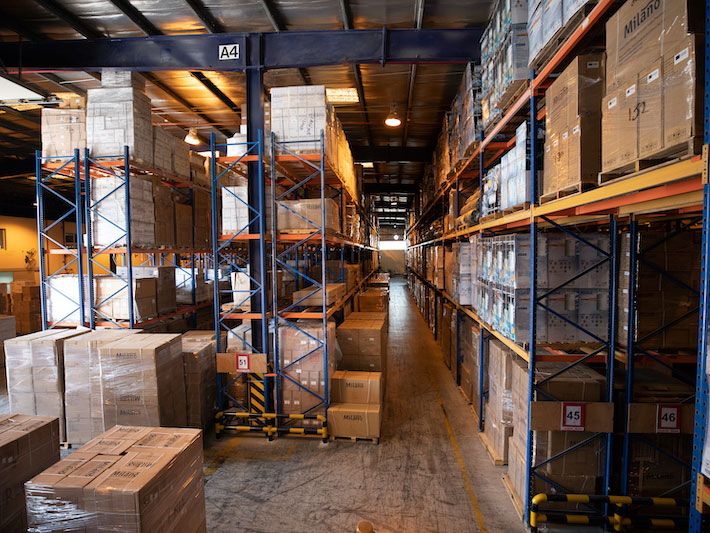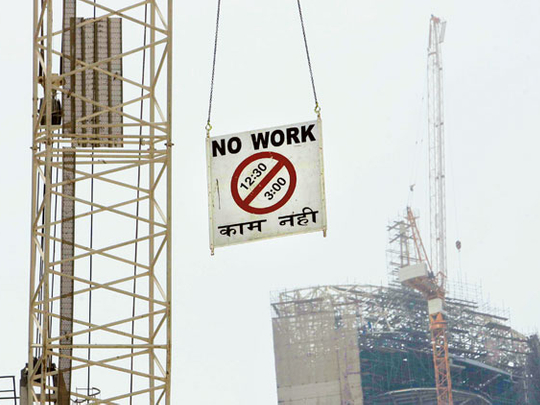Dubai: UAE’s construction costs are starting to hit the roof, as building materials, especially imported ones, suddenly turn expensive. Extremely so.
This comes at a time when developers and other project clients are accounting for each dirham in an attempt to keep their costs down.
For now, property buyers are insulated from the increase in construction-related costs. Developers are unlikely to pass on the higher costs, at a time when there is already so much of ready-to-buy properties available at lower values.
But this only means more pain for developers, and further impacting on their thinning margins.
Read More
Shipping shocks
Building material prices in the local market are up by 10-20 per cent, including on steel, market sources say. The only exception is on cement, which is because there is significant production capacity within the UAE and hence limited reliance on imports.
Industry sources worry that the coming weeks will only add to their costs if the shipping situation does not improve. “From China, freight has gone from $1,000 to $4,000 on a 40-foot container, and for India, rates have gone from $300 to $1,200 – that’s nearly 400 per cent since September,” said Anis Sajan, Managing Director at building material supplier Danube.
“Rates from Europe are now 2,000 euros from 1,200 – and that too is available only on a ‘first come, first serve’. Shipping companies want to make up for the huge loses they had borne earlier this year because of the COVID-19 disruptions.”

Image Credit: Gulf News Archive
Just keep adding up
End of the year is usually a period of higher shipping costs as there is so much demand coming in from everywhere before the winter breaks. But this year’s spikes have been quite unprecedented.
Until August, imports into the UAE were available at $1,000 for a 40-foot container. It shot up to $2,000 during August, and went up to $3,000 during September-October. At the start of this month, some of the transactions are at or around the $4,000 mark. What’s making it worse is that transit times from China and European ports are now averaging 40 days as opposed to 20 earlier, sources add.
Diverting
With the holiday season approaching, much of the container capacities are being diverted to meet the needs of consumers in Europe and North America, and thus leaving limited space for shipments meant for the Middle East. Now, when those higher shipping costs come into play, it shows up on local process of those goods.
Even raw materials are starting to feel the heat… literally. The main reason for a spike in domestic steel prices stem from higher raw material (iron) costs.
“Just in the last few weeks, these have gone up 15-20 per cent,” said Bharat Bhatia of Conares, which operates two steel mills in Dubai. “What’s worse is that even with the rate increase, there’s a scarcity of raw materials. I believe this will force another price jump – by 10 per cent – in coming weeks.
“These will show up in full force in first quarter of next year.”

Image Credit: Gulf News Archive
No passing on?
Industry sources insist the higher cost of imports are not reflected in full at the project level, because most of the sourcing was done before the costs started to escalate. But it remains to be seen how long they can afford to do that from now on.
“We will have to pass on the costs, maybe immediately,” said Bhatia. “We will need support from banks to mitigate this crisis – they should increase our credit lines.”
Reality beckons
Sajan agrees that the first three months of 2021 will be crucial for the construction sector. If more containers get freed up post the New Year, shipping costs could drop back to pre-September levels and thus ease the burden on project costs in the UAE.
If not, “It is finally going to affect the supplier because there is a limit to what he can do when prices have gone up by 20 per cent,” he added. “He will probably go back to the developer and discuss with him the rise in his cost price and come to a mutually beneficial decision to sustain a long-term relationship.
“No other supplier can provide the old – pre-September – prices. This 20 per cent hit is for any- and everybody importing from China, India or Europe.”
Being from the building materials industry as well as the real estate, it has hit us the maximum
Don’t even think
This is when developers in the UAE will start feeling the crunch. In an ideal world, they too would pass on the higher costs, which will be reflected in the values at which their properties are sold. But trying that now could mean buyer interest in their projects will melt away.
“If someone is thinking of increasing their price, they need to remind themselves of the oversupply in the market,” said Sajan. “A developer will have to think twice whether hes better off cutting down on his profits rather than increase rates.
“If a developer has a backlog of unsold stock and he is planning to launch a new project, I don’t think he will increase the price.”
The only certainty is that the volatile nature of costs will add to the uncertainties for the UAE construction sector.



